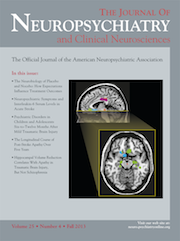How Heterogeneous Can the Clinical Presentation for Creutzfeldt-Jacob Disease Be?
| Case | Age, years | Gender | Illness Duration, months | Major Characteristics | Magnetic Resonance Imaging | 14–3–3 Protein |
|---|---|---|---|---|---|---|
| #1 | 62 | M | 7 | Visual impairment; delirium; cerebellar syndrome; axial and appendicular ataxia | Increase of ventricular volume | + |
| #2 | 62 | F | 4 | Behavioral disturbance; hallucinations; extrapyramidal syndrome | Bilateral hypersignal in parietal and occipital cortex | Not performed |
| #3 | 65 | M | 8 | Seizures; trismus; behavioral changes; pyramidal signs; myoclonus | Hypersignal in T2 and Flair; diffuse atrophy; basal ganglia affected | — |
| #4 | 52 | M | 6 | Motor impairment; myoclonus; dysphagia; pyramidal signs | Hypersignal in T2 and Flair; diffuse atrophy; basal ganglia affected; frontal and parietal damage | + |
Acknowledgments
References
Information & Authors
Information
Published In
History
Authors
Competing Interests
Metrics & Citations
Metrics
Citations
Export Citations
If you have the appropriate software installed, you can download article citation data to the citation manager of your choice. Simply select your manager software from the list below and click Download.
For more information or tips please see 'Downloading to a citation manager' in the Help menu.
View Options
View options
PDF/EPUB
View PDF/EPUBLogin options
Already a subscriber? Access your subscription through your login credentials or your institution for full access to this article.
Personal login Institutional Login Open Athens loginNot a subscriber?
PsychiatryOnline subscription options offer access to the DSM-5-TR® library, books, journals, CME, and patient resources. This all-in-one virtual library provides psychiatrists and mental health professionals with key resources for diagnosis, treatment, research, and professional development.
Need more help? PsychiatryOnline Customer Service may be reached by emailing [email protected] or by calling 800-368-5777 (in the U.S.) or 703-907-7322 (outside the U.S.).

